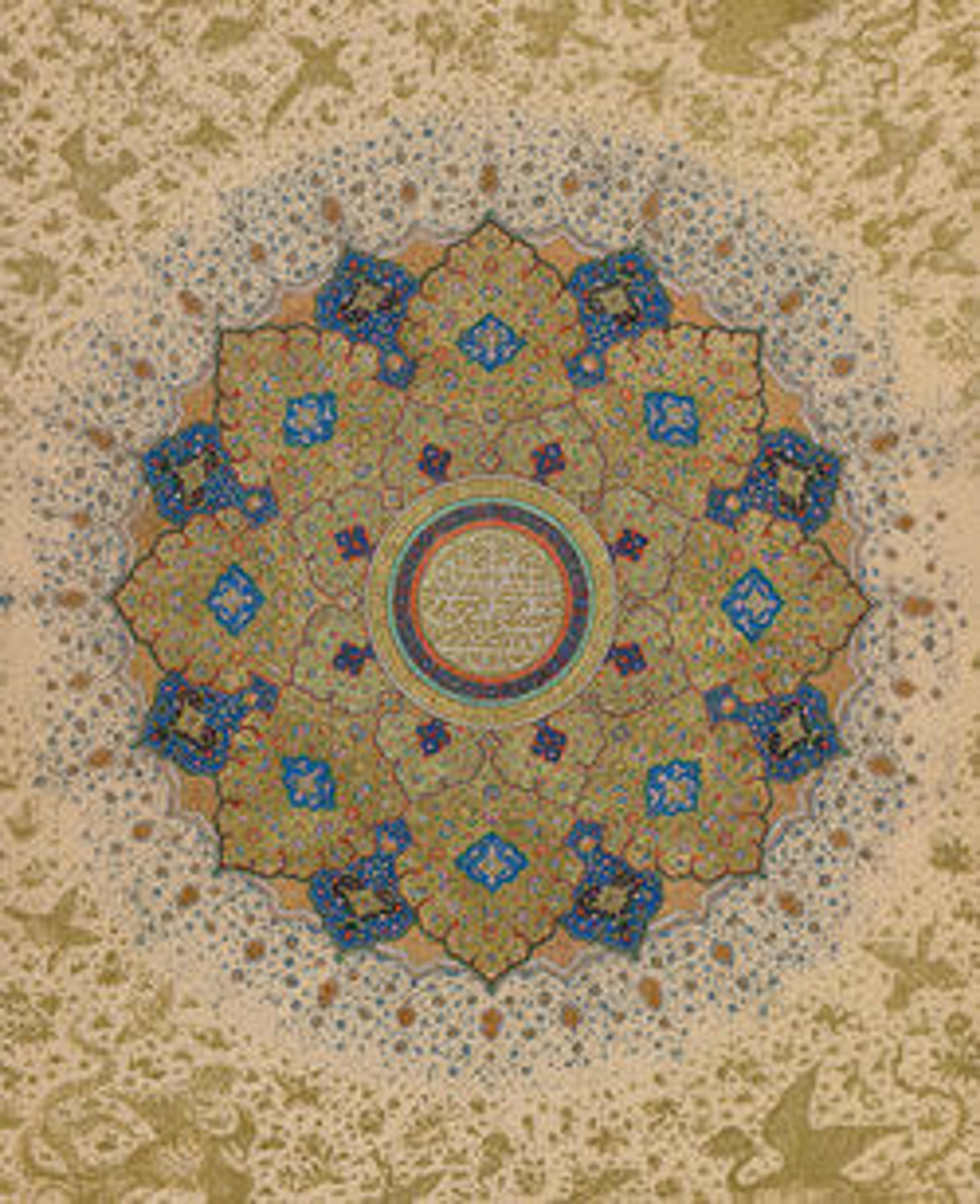Textile Fragment
Opulent textiles woven of silk and gold threads, referred to as "cloth of gold" were treasured by the Mongol elite and rulers of the subsequent Ilkhanid dynasty (1256–1353). The most luxurious were gold-on-gold fabrics, where both pattern and background were woven in differing types of gold thread. This fragment, exhibiting a shimmering pattern against a blue satin ground, while slightly less opulent, still ranks among the most lavish textiles of its day.
Artwork Details
- Title:Textile Fragment
- Date:second half 13th–14th century
- Geography:Attributed to Eastern Islamic Lands
- Medium:Silk, silvered (?) animal substrate wound around a cotton core; lampas
- Dimensions:Textile: L. 14 in. (35.6 cm)
W. 6 1/2 in. (16.5 cm)
Mount: L. 18 1/4 in. (46.4 cm)
W. 10 7/8 in. (27.6 cm)
D. 7/8 in. (2.2 cm) - Classification:Textiles
- Credit Line:Purchase, Friends of Islamic Art Gifts, 1996
- Object Number:1996.286
- Curatorial Department: Islamic Art
More Artwork
Research Resources
The Met provides unparalleled resources for research and welcomes an international community of students and scholars. The Met's Open Access API is where creators and researchers can connect to the The Met collection. Open Access data and public domain images are available for unrestricted commercial and noncommercial use without permission or fee.
To request images under copyright and other restrictions, please use this Image Request form.
Feedback
We continue to research and examine historical and cultural context for objects in The Met collection. If you have comments or questions about this object record, please contact us using the form below. The Museum looks forward to receiving your comments.
